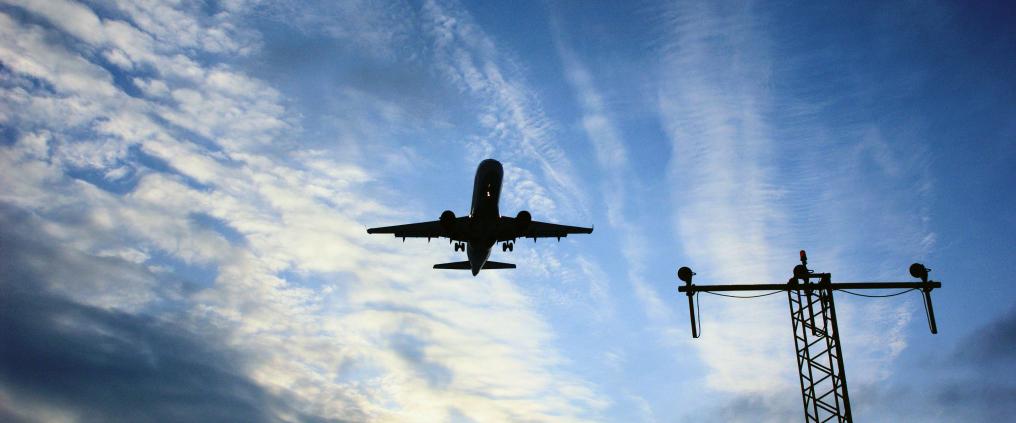As a result of states drawing their borderlines in the skies, European airspace is fragmented. States created points through which planes had to pass when flying in their airspace. Neighbouring states have negotiated regulations around airspace use, but compromise has often been tricky to reach. The fragmented airspace has had a rippling effect on airline and passenger expenses.
These issues do not plague the other side of the Atlantic. The United States uses a single shared airspace management system, and the Federal Aviation Administration (FAA) makes all the decisions related to US airspace use. Thanks to a streamlined approach, planes cross the US twice as efficiently as Europe.
More direct routes means money saved
Air traffic is estimated to double in volume from 2006 to 2025, putting pressure on changing European airspace practices. The efforts to develop a shared airspace began in the early 2000s, when the European Commission started the Single European Sky (SES) initiative, aimed at increasing flight control system capacity and consequently realigning flight routes and decreasing delays, costs and emissions. More efficient and unified practices are therefore of benefit for airlines, passengers and the environment.
A shared airspace benefits airlines, passengers and the environment.
In practice, a uniform and free route airspace allows for cutting corners: instead of assigning airlines predetermined airways, they can go with the shortest route. Undeniably a great state of affairs to aim for, but the performance targets set for air traffic controls have also been a source of annoyance and opposition, as European air traffic safety is already at a high level. In Finland they have been received with less surprise, as its own airspace management targets are very similar.
Developing the SES initiative has required, and will continue to require, close collaboration with the various companies, states and officials in charge of air traffic safety services, as well as with the ICAO (International Civil Aviation Organisation).
The Northern European FAB – Functional Airspace Block – awarded for its efficiency
A uniform European airspace is built in stages by creating functional airspace blocks that aren’t determined by national boundaries. Finavia has been an avid member of the Borealis Alliance, which promotes a shared Northern European FAB, as well as more unified working practices, procedures and data systems. As a part of the initiative, Finland, Estonia, Latvia, Norway, Sweden and Denmark launched a free route airspace in November 2015, the largest Functional Airspace Block in Europe, which is set to expand to cover Icelandic, British and Irish airspaces.
The European Commission gave the Borealis Alliance a Single European Sky award in recognition of the work that these northern countries have put into creating a more efficient airspace. Northern European countries have long been aware of the benefits of collaboration and seeking a good comprehensive solution instead of advancing national interests. Finnish aviation experts have had a key role in the initiative as the country’s airspace is particularly challenging—a dense network of airports and an active air force limits the extent of airspace available for commercial use at any given time.
An independent airspace management company would be more agile in reacting to change
The next stage of the Single European Sky initiative, the SES2+, will continue to focus on increasing airspace management efficiency. The first step is to tender support functions, including advisory services. Later on, tendering will be extended to airspace management.
Incorporating the Finnish air traffic control would improve its operational readiness in a changing environment.
The introduction of tendering and the internationalisation of airspace management are some of the reasons behind Finavia’s decision to prepare for the incorporation of its airspace management functions. Should the incorporation take place, the airspace management company would not be a part of Finavia, but an independent company fully owned by the state. The arrangement would better Finnish air traffic control’s operational readiness and competitiveness in the future. An independent company would also be in a better position to seize new business opportunities, such as building a remote-controlled airspace management system.
Towards automation
In remote-controlled air traffic control towers, cameras replace people. Cameras beat the human eye in detecting movement in foggy, dark and otherwise challenging weather conditions. Live images are sent from the remote-controlled tower to a remote-control center, from where the automated air traffic control system is managed. The first remote-controlled air traffic control tower was taken into use in Örnsköldvik, Sweden, a few years ago. Automation, in addition to internationalisation, is likely to be a powerful agent of change in air traffic control in the years to come.
Read more
EU recognition for effectiveness in North European airspace
Finavia aims to respond to rapid transformation in European airspace management. The incorporation of Finavia’s air traffic control would improve the competitiveness of its services in a changing operational environment. The current corporation model in which Finavia produces both the airport and the air traffic control services is exceptional in Europe.
This article is part of Finavia’s annual report 2016. Click here to view the full annual report.
